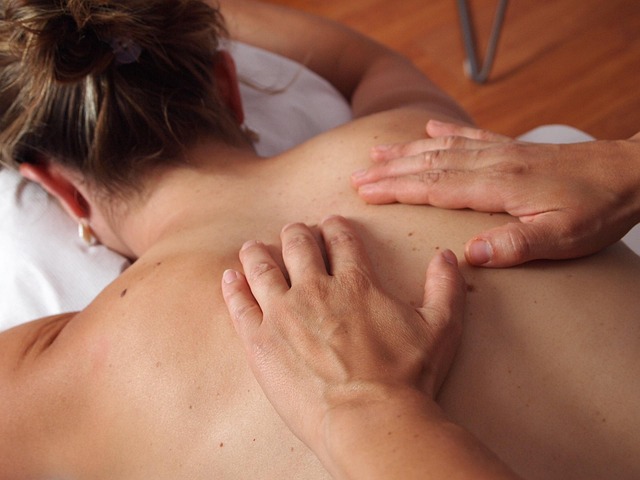Cold plunging (submerging in 50-59°F water for 10-15 mins) reduces inflammation, enhances blood circulation to active muscles, and speeds up waste elimination. For optimal athletic recovery, athletes should incorporate cold plunges post-workout or 2-3 times weekly, tailoring duration and frequency to individual needs. This practice boosts performance, prevents injuries, and revolutionizes training routines by accelerating muscle repair and improving resilience.
Unleash the power of cold for peak athletic performance! This article delves into the science behind cold water therapy, specifically exploring optimal strategies for cold plunge duration and frequency to maximize benefits. From enhancing muscle recovery after intense workouts to preventing injuries, we unravel the secrets of cold plunges for athletes. Discover how the right approach to this ancient practice can revolutionize your post-workout routine and elevate athletic performance.
Understanding Cold Plunge Duration and Frequency for Optimal Recovery
Understanding Cold Plunge Duration and Frequency for Optimal Recovery
Cold plunging, or immersing yourself in cold water, has gained popularity among athletes as a powerful tool for recovery. When it comes to reaping the maximum benefits of this therapy, duration and frequency play a crucial role. Typically, a cold plunge involves submerging in water temperatures ranging from 50-59°F (10-15°C) for an extended period, usually 10-15 minutes. This duration allows the body to experience vasoconstriction, reducing inflammation and easing muscle soreness post-workout.
For optimal recovery, athletes can benefit from incorporating cold plunges as a routine practice. Frequency may vary based on individual needs, but generally, performing a cold plunge immediately after intense exercise or at least 2-3 times weekly can be highly effective. The key is to listen to your body and adjust duration and frequency accordingly to support athletic performance and prevent injuries.
The Science Behind Cold Water Therapy for Athletes' Benefits
Cold water therapy has gained significant attention in the athletic community as a powerful tool for recovery and performance enhancement. The science behind this practice reveals several key benefits tailored to athletes’ needs. When an athlete immerses themselves in a cold plunge, typically an ice bath or cold pool, the body initiates a cascade of physiological responses. This process involves vasoconstriction, where blood vessels narrow, reducing blood flow to extremities and core organs. As a result, the heart pumps more efficiently, delivering oxygen and nutrients directly to active muscles. This targeted circulation promotes faster muscle recovery after intense workouts or competitive events.
Furthermore, cold therapy triggers the release of endorphins, often referred to as ‘feel-good’ hormones, which can reduce inflammation and pain associated with exercise. It also aids in eliminating metabolic waste products from working muscles, minimizing muscle soreness and speeding up the repair process. Regular post-workout cold water immersion has been linked to improved athletic performance, enhanced endurance, and faster reaction times, making it an appealing game-changer for athletes looking to optimize their training routines and prevent injuries.
Maximizing Post-Workout Results: Strategies for Cold Plunges
To maximize the benefits of a cold plunge post-workout, athletes can employ strategic practices. Timing is key; immersing yourself in cold water within 15-30 minutes after exercise enhances muscle recovery and reduces inflammation. This window allows for optimal blood flow to transport nutrients to fatigued muscles while flushing out metabolic waste products.
Frequency plays a crucial role too. For athletic recovery, periodic cold plunges (2-3 times per week) have been shown to improve performance by boosting circulation and promoting faster repair of micro-tears in muscle fibers. Incorporating ice baths for muscle recovery can also aid in injury prevention by strengthening connective tissues and enhancing overall resilience.
Exploring Cold Therapy's Role in Injury Prevention for Athletes
Cold therapy, particularly through cold plunges and ice baths, has gained significant attention in the athletic recovery realm. For athletes looking to enhance their performance and prevent injuries, exploring this ancient practice offers a promising modern solution. The benefits of cold plunges extend beyond immediate relief from muscle soreness; they play a pivotal role in accelerating the body’s natural healing process after intense workouts or competitive events.
Submerging oneself in cold water post-workout has been shown to reduce inflammation and delay the onset of delayed onset muscle soreness (DOMS). This rapid response helps athletes return to training faster and with reduced risk of injury. The strategic use of cold therapy can also improve blood flow, enhancing nutrient delivery to sore muscles while removing metabolic waste products. As a result, athletes may experience improved athletic performance and overall well-being over time.
Cold plunging offers a myriad of benefits for athletic recovery, from enhanced muscle regeneration to improved endurance. For optimal results, incorporating strategic cold water therapy into your routine is key. Aim for 10-15 minutes of immersion, with sessions spaced 2-3 times per week, to maximize post-workout gains and facilitate faster injury prevention without sacrificing performance.
